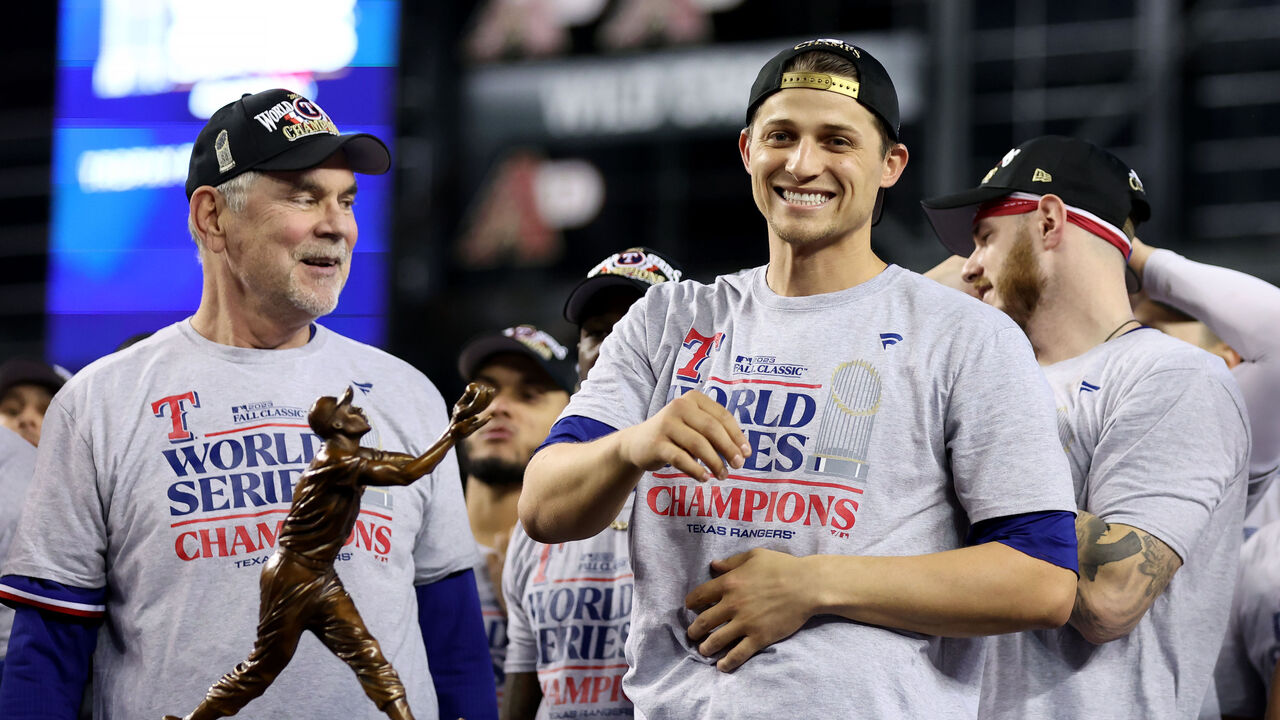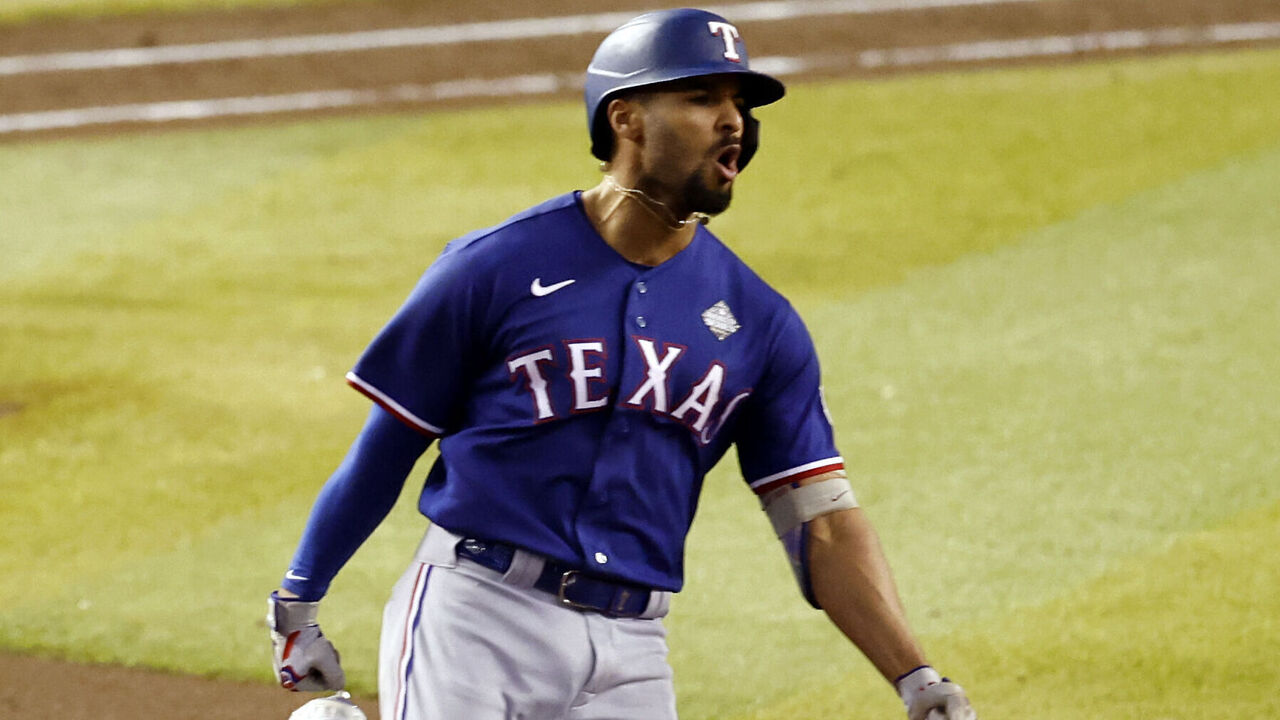How the Texas Rangers ended their drought and shocked the baseball world
When Jacob deGrom sat before reporters last winter and said he joined the Texas Rangers to win a championship, it seemed far-fetched.
The Rangers had improved after losing 102 games in 2021 but had compiled six straight losing campaigns. They had never won a title in their 62-year history and hadn't reached the playoffs since 2016.
The deGrom signing was a continuation of a surprising spending spree that began after the 2021 season. The Rangers shocked baseball early that winter by signing infielders Marcus Semien and Corey Seager to contracts totaling half a billion dollars. Seager's deal was the second-largest free-agent deal in major-league history at the time.

For the Rangers, the deals seemed like desperate investments - long-shot shortcuts for a team well behind the dominant Houston Astros in the American League West. For the players, the deals were simply the greatest contracts available on the open market with the additional perk of playing in Texas, which doesn't have a state income tax.
Semien had fallen a game short of reaching the playoffs with the Toronto Blue Jays in 2021, and Seager was a rare free agent just about to enter his late-20s prime after seven seasons with the Los Angeles Dodgers. Seager had been the 2020 World Series MVP and he was leaving perhaps the best organization in baseball to join a long-term project.
“Culture is built by people," Seager said at his introductory press conference.
Teams often find motivational fuel in creating a narrative that no one believes in them. In this case, it was true that few believed the Rangers were laying the foundation for something special with those signings. Yet on Wednesday night, the Rangers won their first World Series title in franchise history and required just five games to take down the Arizona Diamondbacks.
The Rangers demonstrated that they didn't simply take a shortcut to a World Series title by signing stars; they selected the right players to build not just a stronger roster, but a culture that could create something greater than the sum of its parts.

In understanding how the Rangers ended their championship drought, we must begin with the spending. In an era when so many teams have tried to avoid big splashes on the open market, the Rangers embraced it. Ownership commitment does matter.
Of their 49 wins above replacement as calculated by Baseball Reference, 46.1% of that production came from free agents. Only 14.7% came from the amateur draft and international amateur free agency.
Yes, spending-heavy approaches don't always work - as the New York Mets, San Diego Padres, and Los Angeles Angels of recent years have learned - so they needed some good fortune as well.
Free agents are often near the end of their physical peak or in the midst of their decline years when joining a new club. However, the free agents the Rangers collected (aside from deGrom, who suffered a season-ending injury) continued to perform at peak levels this season.
The 33-year-old Semien enjoyed a 6-WAR season and then put Game 5 out of reach with a ninth-inning home run. Fellow 33-year-old Nathan Eovaldi battled through a spate of Diamondbacks baserunners Wednesday night to become the first player to win five games in the postseason, posting a 2.95 ERA in October.

The Rangers didn't just identify and pay for great talent - they wanted great people, too.
Semien, for instance, is well-known for his character. He didn't miss a single game this year, playing in all 179 games in the combined regular and postseason. Seager is known for enjoying the grind, too. Their routines set standards for the rest of the clubhouse.
New manager Bruce Bochy played a big part in creating that culture as well. He's now just the sixth manager to win four World Series titles.
Clubhouse culture is tough to quantify, but that doesn't mean it doesn't matter. We cannot measure everything that counts.
"You want to create an environment that is going to bring out the best in the players," Bochy told me earlier this season of the environment he attempts to cultivate. "Have them comfortable. Have them play with freedom, freedom that you need to play with to be the best that you can be. Not feeling pressure or anything. It's a culture you want to have."
When the Rangers were off to an excellent start in the first half of the season, I asked first baseman Nathaniel Lowe how every player on the club seemed to be getting better.
Four of the 26 most improved hitters this season (by FanGraphs WAR) were Rangers, and all four were players with established track records: Seager, Semien, Jonah Heim, and Adolis García.
"Happy players. I'm telling you, man. When you get players happy together, I think you are going to find the best performance," Lowe said.
Lowe said happy players want to show up, want to work, and want to share ideas, and they're fully invested in getting better.
Perhaps that explains the Rangers' ability to go 11-0 on the road in the postseason.

And that's also the type of culture that will take full advantage of new development practices and technologies. The Rangers hired coaches like hitting instructor Donnie Ecker to help get the most out of their players.
Semien said he had never hit foam baseballs out of high-velocity machines as he did this season before joining Texas. That allowed him more game-like reps because the foam balls reduce wear and tear on players' hands.
There's a reason that big spending worked this time and not when the Rangers signed Alex Rodriguez to a record free-agent deal after the 2000 season. Former president Jon Daniels, fired in August 2022, explained why this would be different when the club signed Seager nearly two years ago.
"The size of the contract that was given to Alex (Rodriguez) at the time, that wasn't so much the issue," Daniels said, according to MLB.com's Kennedi Landry. "It was that it was not consistent with the rest of the plan. There was not a continuing commitment to be able to build, whether that was to promote young players and develop them or to be able to add other key players externally. That didn't really happen."
It did happen this time, although general manager Chris Young finished the job after being promoted following Daniels' dismissal.
The Rangers folded young homegrown players such as Josh Jung and Evan Carter into the mix. They supplemented the roster with signings like Eovaldi last offseason and brought in trade-deadline acquisitions such as Max Scherzer and Jordan Montgomery when the Rangers lost steam and the Astros and Mariners caught them in the standings.
The activity ran counter to the strategy of many GMs who now choose not to go all-in on any single season. "I believed in the character of the group," Young told The Athletic's Andy McCullough of his approach to the deadline. "Winning people. High-character guys. I knew that they would fight until the end.”
Yes, the Rangers paid up for stars, but spending alone doesn't explain this championship. They didn't buy a title. To reach the pinnacle of the sport, they had to build a culture. They had to build a team.
Travis Sawchik is theScore's senior baseball writer.
HEADLINES
- Reds sign Bleday to 1-year deal reportedly worth $1.4M
- Report: Giannis expected to return from calf injury vs. Bulls
- NFL Week 17 prop party: Will Eagles' D limit Josh Allen?
- Saturday NFL betting: Will Ravens keep playoff hopes alive vs. Packers?
- Lopez drills career-high 9 treys as Clippers defeat Blazers